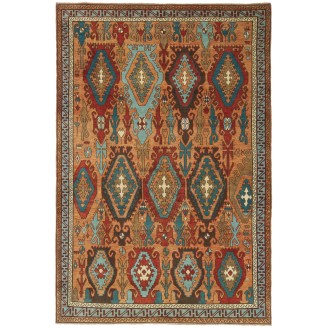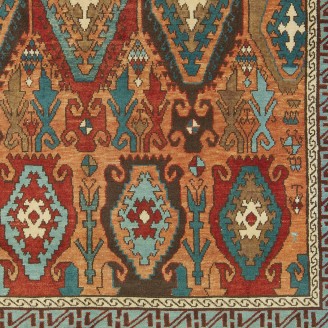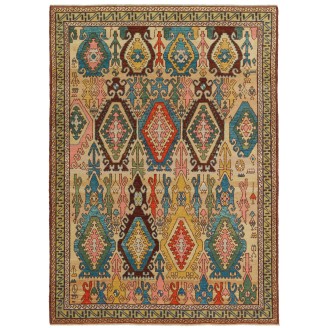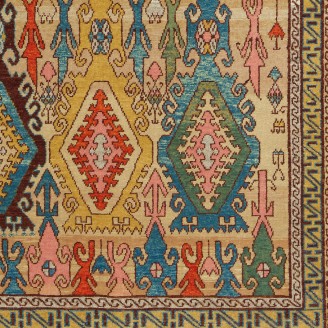The Sailer Anchor Carpet
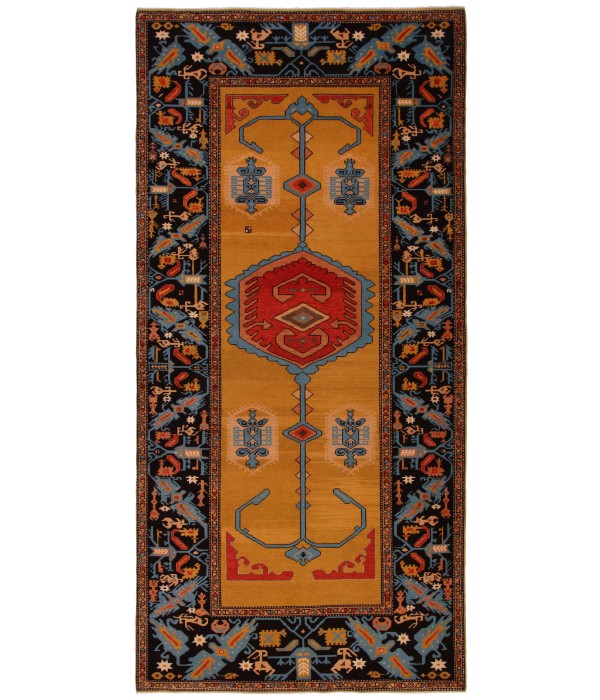
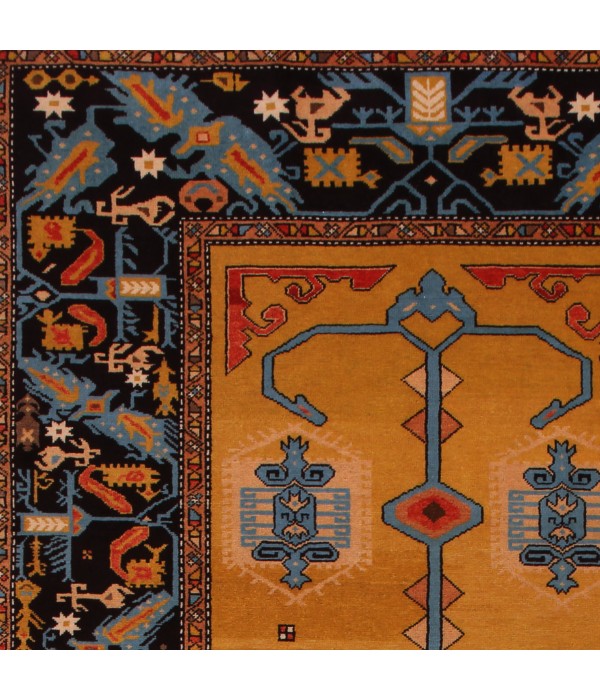
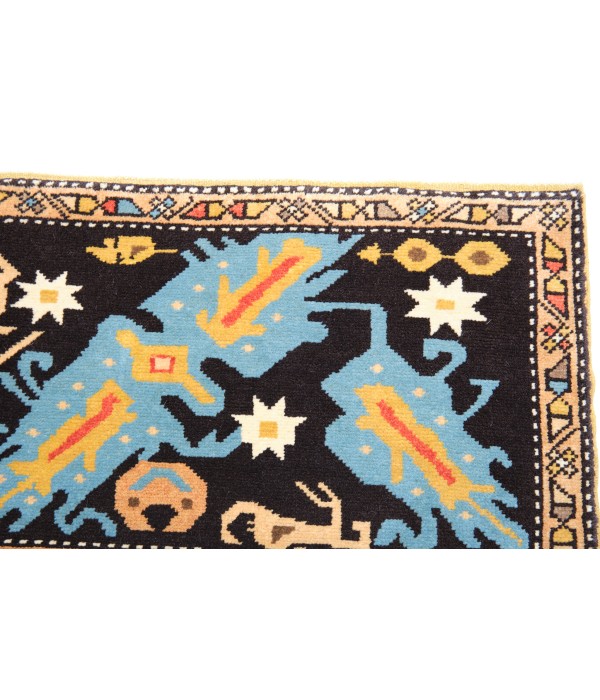
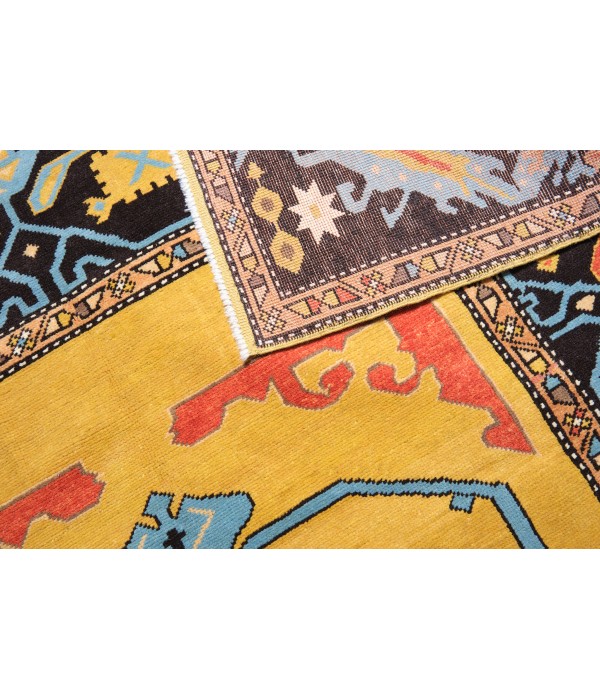
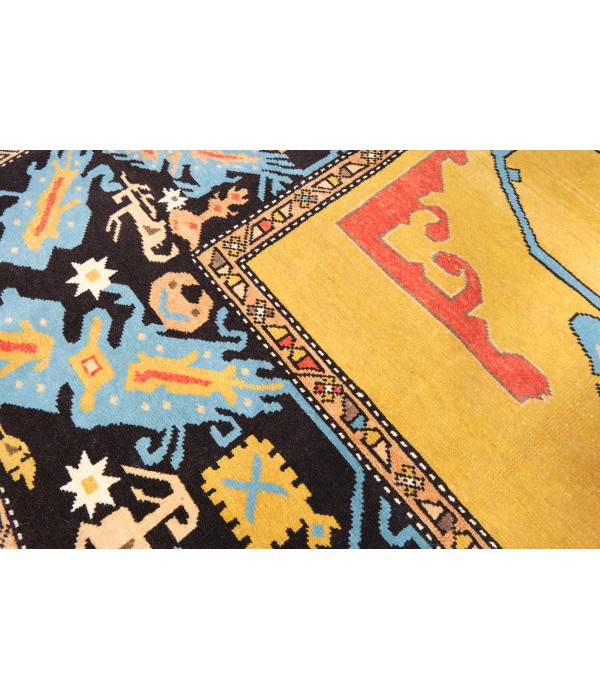

New
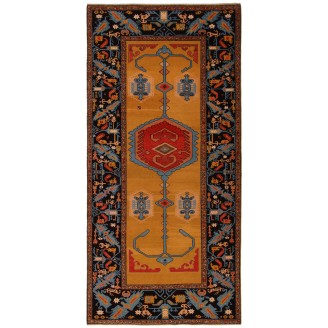
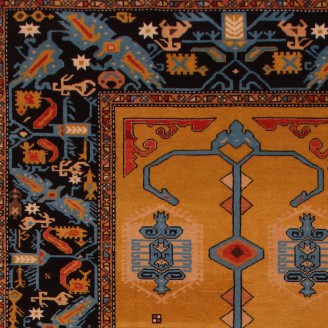
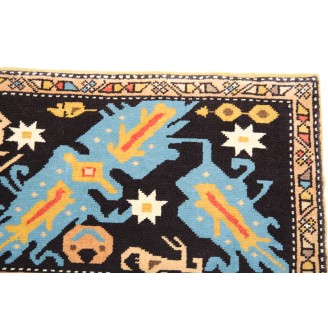
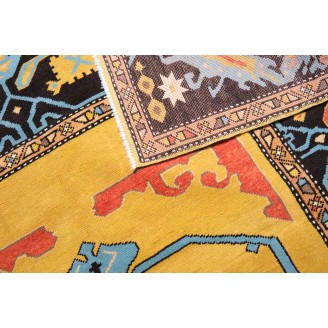
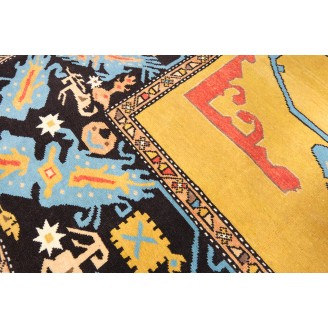

Model: ART00366The Sailer Anchor Carpet
Group: Anatolian Rugs Family
Area: Anatolian
Material of Pile: Natural Dyed Hand-spun Wool
Material Warp / Weft: Wool on Wool
Structure: Symmetrical knot
Knots Density: 36x29
Pile (mm): 2
Production Place: Wast Anatolia – Manisa Province
Weight: 12.60kg
Location: Tokyo
Stock: In Stock
Dimensions:
The source of carpet comes from the book Orient Star - A Carpet Collection, E. Heinrich Kirchheim, Hali Publications Ltd, 1993 nr.198. This is a dramatic and unique field design 16th-century carpet from the Anatolia region, Turkey. According to this book; at the top of the vertical extensions from the central medallion sits the small female figure: fallopian tubes extend from her lower body into the field, and the central medallion may represent the womb and embryo within it. Among specialists, Anatolian carpets and kilims are believed to record symbols of ancient values and ideas. This tradition dates back several millennia and was only displaced during the industrial age. The Anatolian kilim design tradition probably owes its lucky survival to the fact that pile-woven carpets look more precious and would already have had a higher prestige value several millennia ago. Kilim weaving was, therefore, able to survive undisturbed within an intact cultural context for a long period. The design of this rug is interpreted with a series of borders and soft colors chosen by our designers for this rug.
Color summary: 9 colors in total, most used 4 colors are;
Color summary: 9 colors in total, most used 4 colors are;
- Dark Brown 316 (No Dye - Sheep’s own Color)
- Khaki 413 (Dyers’s Weed)
- Vidalia 35 (Indigo)
- Coral 531 (Madder Root - Walnut Husk)
Dimensions:
5 ft 4 in x 11 ft 0 in ( 164cm x 337cm )
Price:
$5,850
Ex Tax: $5,850
Ask a Question About This Product
Tags:
Runner

